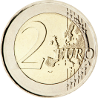 |
C o m m e m o r a t i v e C o i n s |
||
| ⇑ 2008 ⇑ | |||||||
| 2009 | |||||||
| Image | Country | Date | Feature | Ref. | Volume | ||
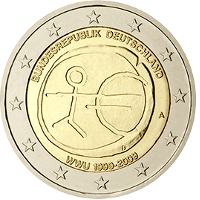
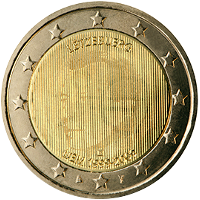 🔎
🔎 |
 |
Common Issue | 01 Jan. — 26 Mar. 2009 |
Ten years of Economic and Monetary Union (EMU) |
20001 20002 20005 |
82,484,623 |  |
The Luxembourg coin has a special feature in this series: Luxembourg law stipulates that no national coin may be issued without the portrait of the head of state. Therefore, a portrait of Grand Duke Henri is shown as a latent image above the motif. The non‐euro country Romania has also minted the motif on 10 Lei coins. |
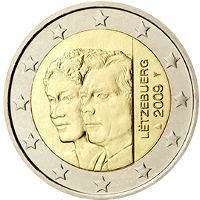 🔎
🔎 |
 |
Luxembourg | 15 Jan. 2009 | 90th anniversary of Grand Duchess Charlotte's Accession to the Throne 6th coin of the Grand-Ducal Dynasty series |
20001 20002 20005 |
838,000 |  |
 🔎
🔎 |
 |
Germany | 08 Feb. 2009 | Saarland (Ludwigs‐church in Saarbrücken) 4th coin in the Federal States series |
20001 20002 20005 |
30,940,630 |  |
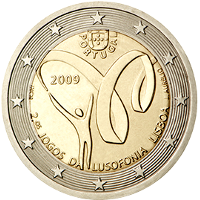 🔎
🔎 |
 |
Portugal | 09 Jun. 2009 | Lusophony Games 2009 |
20001 20002 20005 |
1,285,000 |  |
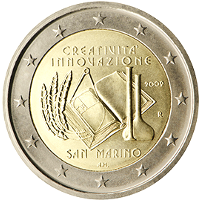 🔎
🔎 |
 |
San Marino | 05 Sep. 2009 | European Year of Creativity and Innovation |
20001 20002 20005 |
130,000 |  |
 🔎
🔎 |
 |
Belgium | 25 Sep. 2009 | 200th birthday of Louis Braille |
20001 20002 20005 |
5,013,500 |  |
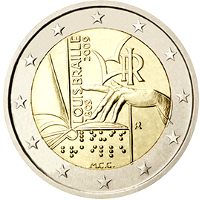 🔎
🔎 |
 |
Italy | 15 Oct. 2009 | 200th birthday of Louis Braille |
20001 20002 20005 |
2,000,000 |  |
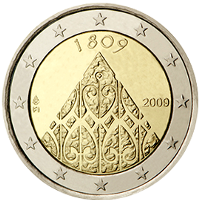 🔎
🔎 |
 |
Finland | 23 Oct. 2009 | 200th anniversary of Finnish Autonomy |
20001 20002 20005 |
1,600,000 |  |
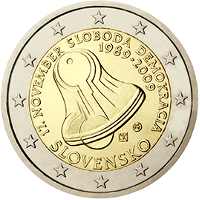 🔎
🔎 |
 |
Slovakia | 10 Nov. 2009 | 20th anniversary of the Start of the Velvet Revolution |
20001 20002 20005 |
1,000,000 |  |
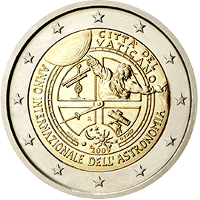 🔎
🔎 |
 |
Vatican City | 18 Nov. 2009 | International Year of Astronomy |
20001 20002 20005 |
106,084 |  |
| ⇓ 2010 ⇓ |
| References : | |||
| 20001 | Images taken with authorisation by the ECB ‐ Mail dated 20.Feb.2020 © "European Central Bank" |
20002 | Data mirrored from Wikipedia Page "2_euro_commemorative_coins" with friendly support of the guardians of that page. |
| 20003 | Not Applicable | 20004 | Coloured version of this Commemorative Coin in circulation EU‐legal‐technical specifications do not recongnise colour prints, but the EU is tolerate them, due to the facts that their numbers are very small and that they are sold in special packs and therefor are very unlikely to be used as currency. |
| 20005 | enlarged Images taken with authorisation by Gerd Seyffert © "Gerd Seyffert 2021" |
20006 | Not Applicable |
 |


